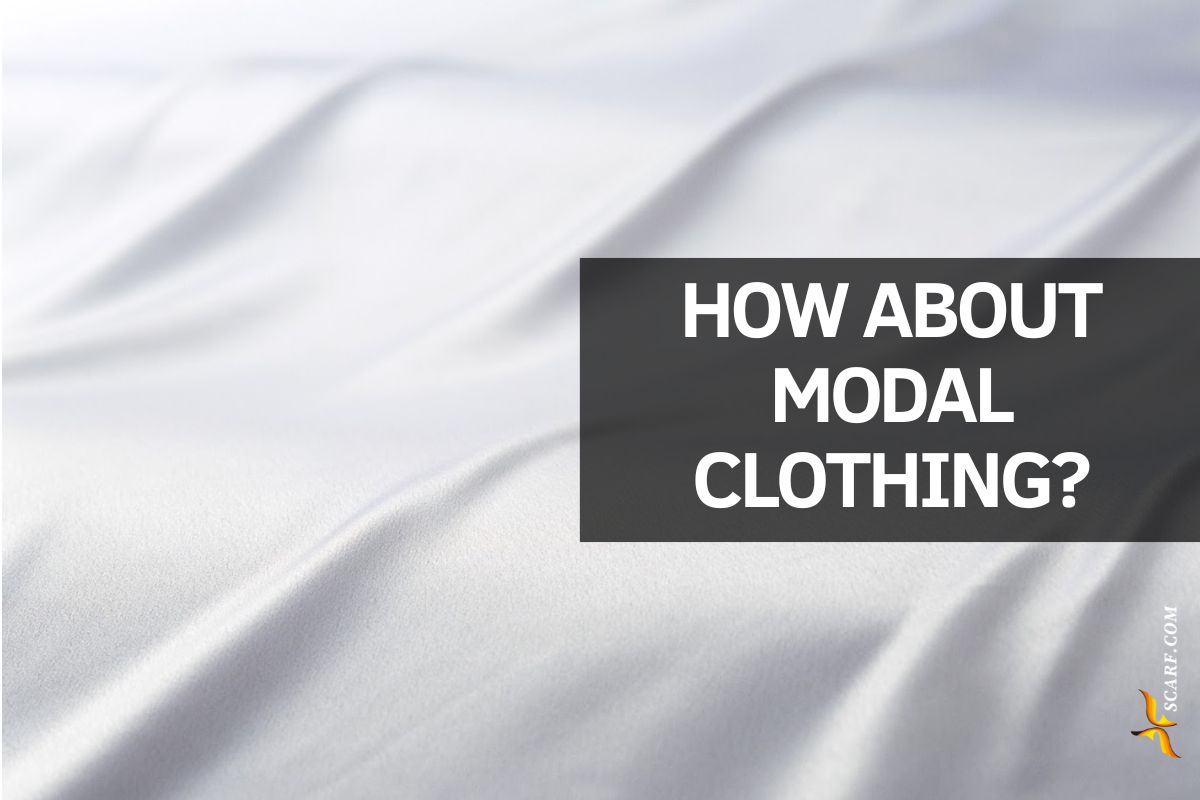Do you know what is modal clothing? Does modal shrink? Do you have a lot of questions about Modal? No need to read other answers, this post will tell you all the questions you are interested in.
What is Modal?
Modal is a type of rayon fabric composed of cellulose fibers derived from beech trees. Known for its soft texture, breathability, and sustainability, Modal has become popular in the fashion industry.
Does Modal Shrink?
Modal is known for its durability and resistance to shrinkage, making it a reliable choice for clothing and home textiles. When properly cared for, Modal garments maintain their shape and size even after multiple washes.
In addition to Modal, Polyester is another non-shrinking fabric.
Benefits of Modal Fabric
Natural Stretch: Modal is very flexible, making it ideal for T-shirts and activewear.
Ultra-Soft Fabric: Modal is very soft.
Breathable Fabric: Modal is great for activewear, base layers and underwear, and the weave of this fabric allows for very good breathability.
Absorbency: Modal absorbs 50% more than cotton.
Durability: Modal is very strong due to its tight weave and long fibers.
Drape Well: Similar to rayon and other silk alternatives, Modal has a good drape.
Eco-Friendly Fabric: Modal is made from recycled plants and uses fewer chemicals in its production process than other types of rayon.
No Pilling: The fabric resists pilling and has a smooth surface, making it perfect for everyday wear and use.
No Color Fade: The fabric absorbs dyes in warm water and does not fade during washing.
No Shrinking: Unlike rayon, Modal is unlikely to shrink.
Biodegradable Fabric: Modal is completely biodegradable.
Wrinkle-Free: Modal resists wrinkles and requires only minimal ironing to stay smooth.
Common Modal Clothing
Modal Hijab
Modal fabric is often used for hijabs and head scarf due to its lightweight, breathable, and comfortable nature. It drapes well and maintains its shape, making it a popular choice for headscarves.


Modal Pajamas
Modal’s comfort and durability make it ideal for pajamas and other sleepwear. The fabric feels soft against the skin and helps regulate temperature, ensuring a comfortable night’s sleep.


Underwear Modal
Due to its softness and breathability, Modal is often used in underwear and lingerie. It provides a smooth, comfortable fit and wicks moisture away from the body, keeping the wearer cool and dry.


Modal Activewear
Modal is also used in activewear because of its stretchiness, moisture-wicking properties, and ability to retain shape. It allows for freedom of movement and keeps the wearer comfortable during physical activities.


Micro Modal
Micro Modal is an enhanced version of the standard modal fabric, known for its exceptional softness and finer fiber structure. Made from beech tree pulp, like regular modal, Micro Modal undergoes additional processing to produce fibers that are even thinner and more lightweight. This results in a fabric that offers an incredibly smooth and silky feel, making it ideal for clothing items that require a luxurious touch.
It also retains all the benefits of standard modal, such as durability, breathability, and excellent moisture-wicking properties.
Modal vs Cotton
Comfort Preference: Modal is often chosen for its superior softness and drape, while cotton is favored for its natural feel and versatility.
Climate Considerations: Modal’s moisture-wicking properties make it great for warmer weather or activities, whereas cotton’s absorbency may be preferred in more humid conditions.
Care Requirements: Modal may require more delicate care to maintain its softness and shape, while cotton is generally more forgiving in terms of washing and drying.
Care Tips for Modal Clothing
- Machine Wash: Wash Modal clothing on a gentle cycle with cold water to maintain its softness and color.
- Avoid High Heat: Use low heat settings when drying to prevent any potential damage.
- Gentle Detergents: Opt for mild detergents to keep your Modal garments looking their best.
Are you looking for clothing that combines comfort, style, and sustainability? Look no further than Modal clothing! Say goodbye to discomfort and hello to a new favorite in your wardrobe!
Want to buy modal clothing? or other products made by modal fabric? CONTACT US, we can offer you with the fantastic products.
FAQ
Can modal go in the dryer?
Modal fabric can generally be placed in the dryer on a low or medium heat setting. However, it’s best to check the care label on the specific garment, as some modal blends or garments with special finishes might have different care instructions. To minimize wear and preserve the fabric’s quality, you can also opt to air dry modal items.
ls modal hot to wear?
Modal is known for its breathability and moisture-wicking properties, making it a comfortable and cool fabric to wear in warm weather. It is softer and more absorbent than cotton, which helps in keeping you cool and dry. Therefore, modal is generally not considered hot to wear and is suitable for summer clothing.
Does modal show sweat?
Modal is highly absorbent and has good moisture-wicking properties, which helps in drawing sweat away from the body and reducing visible sweat marks. While no fabric is entirely sweat-proof, modal is generally better at handling moisture compared to many other fabrics, making it less likely to show sweat.
Is modal or polyester better?
Modal: Soft, breathable, highly absorbent, and eco-friendly, made from beech tree pulp. It’s comfortable and good at wicking moisture but less durable and requires gentle care.
Polyeste: Less breathable, less absorbent, and made from synthetic materials. It’s very durable, resistant to wrinkles and shrinking, and easy to care for but can retain odors and feel less comfortable against the skin.
What is the difference between TENCEL and modal?
TENCEL (Lyocell) and modal are both types of rayon made from wood pulp but differ in several ways:
TENCEL: Made from eucalyptus wood, uses a closed-loop production process, making it more eco-friendly. It’s soft, breathable, highly absorbent, wrinkle-resistant, and more durable than modal.
Modal: Made from beech wood, uses a traditional production process, slightly less eco-friendly. It’s very soft, breathable, highly absorbent, drapes well, and retains color better but is less durable than TENCEL.
Does modal have Microplastics?
Modal, being a semi-synthetic fiber made from cellulose (typically from beech trees), does not contain microplastics. Unlike synthetic fibers such as polyester, which can shed microplastics during washing, modal is biodegradable and derived from natural sources, making it a more environmentally friendly option in this regard.
Does modalretain odor?
Compared to synthetic fabrics like polyester, modal is generally less prone to retaining odors. Modal fabric is known for its excellent moisture-wicking properties, which help in reducing the buildup of sweat and bacteria that can cause odor. However, like any fabric, it can retain odors if not properly cared for. Regular washing and proper drying are essential to prevent odors from developing.
Which is better, modal or rayon?
Modal is often preferred over standard rayon (viscose) for its superior softness, durability (especially when wet), and moisture-wicking abilities. It comes from beech trees, offering a smoother feel and better resistance to shrinking and pilling. Rayon, derived from various wood pulps, is softer but less durable and more prone to wrinkling and shrinkage, requiring gentler care.
Does modal keep you warm in winter?
It may not provide sufficient warmth on its own in very cold conditions. Modal fabric is lightweight and breathable, making it more suitable for warmer temperatures or as a layering piece in colder weather. While it provides some insulation due to its structure, it may not be as effective at retaining warmth as heavier fabrics like wool or fleece. For winter, modal can be comfortable as a base layer or in combination with other warmer garments.



